Mori Yoshitoshi: The Master of modern kappazuri-e
Mori Yoshitoshi (1898–1992) was a highly influential Japanese artist best known for his work in kappazuri-e (‘stencil printing’) and his contributions to the Sōsaku Hanga (‘creative print’) movement. Mori’s artistic journey was marked by a deep commitment to Japanese folk traditions, which he revitalized and transformed into a modern art form, blending the old with the new in a unique and innovative way.
 Goro, Mori Yoshitoshi. Source: ukiyo-e.orgꜛ
Goro, Mori Yoshitoshi. Source: ukiyo-e.orgꜛ
Biography
Mori Yoshitoshi (森 義利), born on March 31, 1898, in Tokyo, Japan, was raised by his aunt, a teacher of Nagauta—a form of lyrical narrative singing associated with kabuki theater. His early life in Nihonbashi, a bustling district of central Tokyo, greatly influenced his artistic themes, which often depicted street life. Coming from a poor family, Mori had to work from a young age, but he was always drawn to art, particularly ukiyo-e. His first formal art education came from the Shin Hanga artist Yamakawa Shūhō (1898–1944). Additionally, he learned textile design and dyeing techniques from Shūhō’s father, who was a textile designer.
In 1918, Mori was drafted into the military and served in Korea until 1920. Upon returning to Japan, he furthered his education and became involved with the mingei (folk art) movement, led by Yanagi Muneyoshi. This movement sought to preserve and celebrate traditional Japanese crafts and folk art. During the 1920s, Mori worked as a textile designer and dyer, a craft he continued to explore throughout his life.
In the 1950s, Mori shifted his focus to kappazuri-e, a form of stencil printing that became his signature technique. This transition was partly influenced by his background in textile dyeing, where he worked with techniques similar to stencil printing. His works from this period depicted vibrant scenes from daily life, traditional festivals, and figures from Japanese mythology and folklore, characterized by a strong sense of rhythm, dynamic compositions, and a deep connection to Japanese cultural heritage.
Mori continued to work actively as an artist well into his later years, gaining recognition both in Japan and internationally. His works were regularly exhibited, and he became particularly well-known in the United States after one of his prints was included in James A. Michener’s book “The Modern Japanese Print.” He distanced himself from other artist associations between 1965 and 1985, preferring to pursue his artistic vision independently. Mori Yoshitoshi passed away on May 29, 1992, leaving behind a rich legacy as a master of modern Japanese folk art and one of the leading figures in the Sōsaku Hanga (‘creative print’) movement.
Artistic style and significance
Mori Yoshitoshi is celebrated for his distinctive use of kappazuri-e, a stencil printing technique that allowed him to create bold, colorful works that were deeply rooted in Japanese folk traditions. His work is often associated with the Sōsaku Hanga movement, which emphasized the artist’s involvement in all aspects of printmaking, from design to carving to printing, as opposed to the traditional collaborative approach seen in ukiyo-e.
Kappazuri-e: A revival of folk art
Mori’s decision to focus on kappazuri-e was both a continuation and a revitalization of traditional Japanese art forms. Kappazuri-e was historically used in the Edo period for producing inexpensive prints, often as a more accessible alternative to woodblock prints. Mori, however, elevated this technique to the level of fine art, using it to create works that were not only visually striking but also culturally resonant.
His kappazuri-e works are characterized by their vibrant colors, bold lines, and dynamic compositions. He often depicted scenes from Japanese festivals, kabuki theater, and folklore, infusing his prints with a sense of movement and energy that brought these traditional subjects to life. His figures are often stylized, with exaggerated expressions and gestures that convey the emotion and drama of the scene.
One of the defining features of Mori’s style was his use of color. Drawing on his background in textile design, he employed a rich palette of colors, often layering them to create depth and texture. His use of color was both expressive and symbolic, enhancing the narrative quality of his prints.
Integration of tradition and modernity
Mori’s work is notable for its seamless integration of traditional Japanese aesthetics with modern artistic sensibilities. While deeply rooted in the folk art traditions of Japan, his prints also reflect the influence of modern art movements, both in Japan and abroad. This blend of old and new allowed Mori to create works that were both timeless and contemporary, appealing to a wide audience.
Mori was particularly interested in the portrayal of everyday life and common people, themes that were central to the mingei movement. His prints often depict scenes of work, play, and ritual, capturing the rhythms and rituals of daily life in a way that is both celebratory and reflective.
In addition to his work in kappazuri-e, Mori also experimented with other printmaking techniques and mediums, including woodblock printing and painting. His versatility as an artist allowed him to explore different forms of expression, while his commitment to Japanese cultural heritage remained a constant theme throughout his career.
Legacy and influence
Mori Yoshitoshi is remembered as one of the most important figures in the modern revival of Japanese folk art. His work helped to preserve and promote traditional Japanese techniques and themes, while also pushing the boundaries of what these forms could achieve in a modern context. Mori’s prints are celebrated for their vitality, craftsmanship, and deep cultural resonance, and they continue to be highly regarded by collectors and art enthusiasts.
Mori’s influence extends beyond his own work, as he inspired a generation of artists to explore the possibilities of kappazuri-e and other traditional techniques in their own practices. His legacy is one of innovation and respect for tradition, making him a key figure in the history of Japanese art.
Notable works
Throughout his career, Mori Yoshitoshi produced numerous works that are considered masterpieces of modern Japanese printmaking. Here are some of his most famous pieces:
 Arrowhead, Mori Yoshitoshi. Source: ukiyo-e.orgꜛ
Arrowhead, Mori Yoshitoshi. Source: ukiyo-e.orgꜛ
 Kabuki Actor with Fan, Mori Yoshitoshi, 1986. Source: ukiyo-e.orgꜛ
Kabuki Actor with Fan, Mori Yoshitoshi, 1986. Source: ukiyo-e.orgꜛ


Left: Samurai with War Fan, Mori Yoshitoshi, 1991. Source: ukiyo-e.orgꜛ – Right: Shibaraku, Mori Yoshitoshi, c. 1970. Source: ukiyo-e.orgꜛ


Left: Warrior on a Horse, Mori Yoshitoshi, 1987. Source: ukiyo-e.orgꜛ – Right: Bamboo Flute, Mori Yoshitoshi, 1979. Source: ukiyo-e.orgꜛ
 Ceramic craftsmen, Mori Yoshitoshi, 1988. Source: ukiyo-e.orgꜛ
Ceramic craftsmen, Mori Yoshitoshi, 1988. Source: ukiyo-e.orgꜛ


Left: May; Boy’s Festival, Mori Yoshitoshi, 1962. Source: ukiyo-e.orgꜛ – Right: The Potter, Mori Yoshitoshi, 1973. Source: ukiyo-e.orgꜛ


Left: Lovers, Mori Yoshitoshi, 1986. Source: ukiyo-e.orgꜛ – Right: Tempura Restaurant, Mori Yoshitoshi, 1988. Source: ukiyo-e.orgꜛ


Left: Tori no ichi festival at Otaka shrine, Mori Yoshitoshi. Source: ukiyo-e.orgꜛ – Right: November; Rake Market on the Day of Rooster, Mori Yoshitoshi, 1962. Source: ukiyo-e.orgꜛ


Left: Carpenters, Mori Yoshitoshi, 1973. Source: ukiyo-e.orgꜛ – Right: Guardian Deity, Mori Yoshitoshi, 1965. Source: ukiyo-e.orgꜛ
 Mounted Samurai, Mori Yoshitoshi, 1985. Source: ukiyo-e.orgꜛ
Mounted Samurai, Mori Yoshitoshi, 1985. Source: ukiyo-e.orgꜛ


Left: October; Pickles Market, Mori Yoshitoshi, 1962. Source: ukiyo-e.orgꜛ – Right: Tatami-mat Maker, Mori Yoshitoshi, 1973. Source: ukiyo-e.orgꜛ
 Loading, Mori Yoshitoshi, 1973. Source: ukiyo-e.orgꜛ
Loading, Mori Yoshitoshi, 1973. Source: ukiyo-e.orgꜛ
 Yakko, Mori Yoshitoshi, 1987. Source: ukiyo-e.orgꜛ
Yakko, Mori Yoshitoshi, 1987. Source: ukiyo-e.orgꜛ


Left: July; Star Festival, Mori Yoshitoshi, 1962. Source: ukiyo-e.orgꜛ – Right: Masks (red), Kabuki masks, Mori Yoshitoshi. Source: ukiyo-e.orgꜛ
 Black Hair, Mori Yoshitoshi, 1989. Source: ukiyo-e.orgꜛ
Black Hair, Mori Yoshitoshi, 1989. Source: ukiyo-e.orgꜛ


Left: August; Obon Dance, Mori Yoshitoshi, 1962. Source: ukiyo-e.orgꜛ – Right: Bath House, Mori Yoshitoshi, 1988. Source: ukiyo-e.orgꜛ
 Arrowhead, Mori Yoshitoshi, 1985. Source: ukiyo-e.orgꜛ
Arrowhead, Mori Yoshitoshi, 1985. Source: ukiyo-e.orgꜛ
 Intimacy Black and White, Mori Yoshitoshi, 1976. Source: ukiyo-e.orgꜛ
Intimacy Black and White, Mori Yoshitoshi, 1976. Source: ukiyo-e.orgꜛ
 Red and White Shishi Dancers, Mori Yoshitoshi, 1983. Source: ukiyo-e.orgꜛ
Red and White Shishi Dancers, Mori Yoshitoshi, 1983. Source: ukiyo-e.orgꜛ


Left: Samurai with naganata, Mori Yoshitoshi. Source: ukiyo-e.orgꜛ – Right: Bijin with Umbrella, Mori Yoshitoshi, 1985. Source: ukiyo-e.orgꜛ


Left: Fishmonger, Mori Yoshitoshi, 1988. Source: ukiyo-e.orgꜛ – Right: Sake Drinker, Mori Yoshitoshi, 1977. Source: ukiyo-e.orgꜛ


Left: June; the Rainy Season, Mori Yoshitoshi, 1962. Source: ukiyo-e.orgꜛ – Right: Sukeroku, Mori Yoshitoshi, 1985. Source: ukiyo-e.orgꜛ


Left: Sukeroku, Mori Yoshitoshi, 1985. Source: ukiyo-e.orgꜛ – Right: September; Chrysanthemums, Mori Yoshitoshi, 1962. Source: ukiyo-e.orgꜛ
 Kabuki Actor with Flower, Mori Yoshitoshi, 1986. Source: ukiyo-e.orgꜛ
Kabuki Actor with Flower, Mori Yoshitoshi, 1986. Source: ukiyo-e.orgꜛ
 Nio, Mori Yoshitoshi, 1970. Source: ukiyo-e.orgꜛ
Nio, Mori Yoshitoshi, 1970. Source: ukiyo-e.orgꜛ
Conclusion
Mori Yoshitoshi is celebrated as a master of kappazuri-e and a key figure in the modern revival of Japanese folk art. His work, characterized by its bold use of color, dynamic compositions, and deep connection to Japanese cultural traditions, continues to be highly regarded for its artistic beauty and cultural significance. Mori’s legacy as an innovator who blended tradition with modernity ensures that his work remains influential and cherished in the world of Japanese art.
References and further reading
- Chris Uhlenbeck, Jim Dwinger, Philo Ouweleen, Shin Hanga - Die »Neuen Drucke« Japans 1900-1950, 2022, Hatje Cantz, ISBN: 9783775752190
- viewingjapaneseprints.netꜛ
- Mori Yoshitoshi on ukiyo-e.orgꜛ

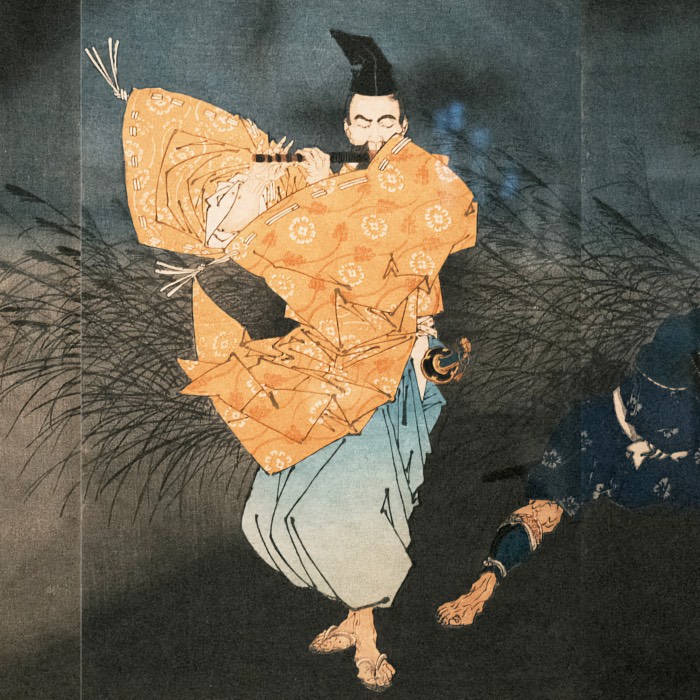
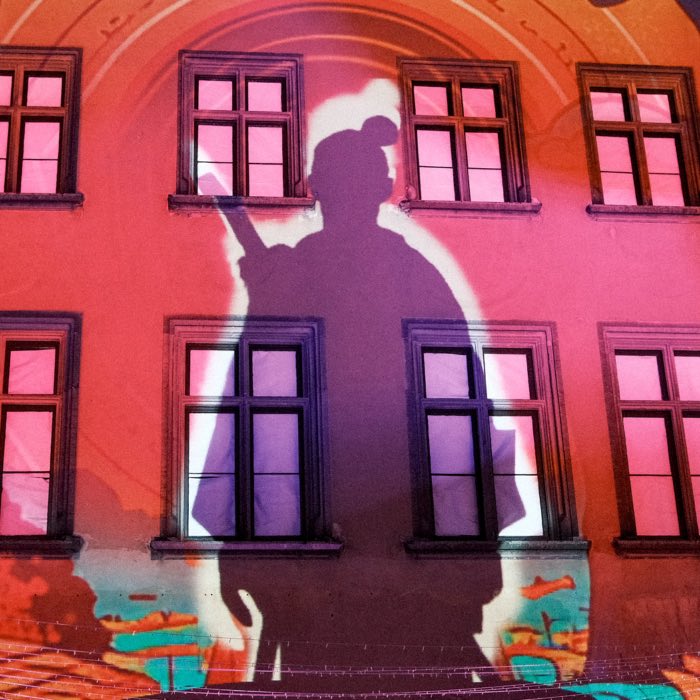
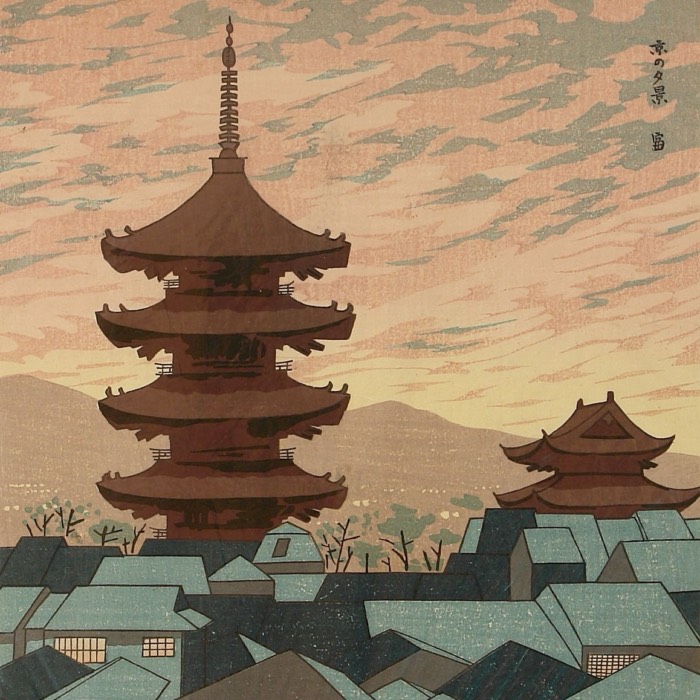
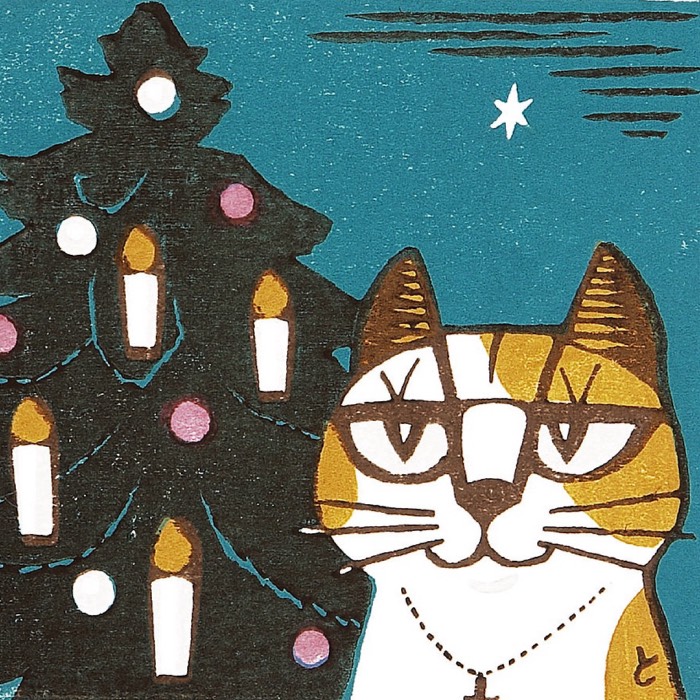
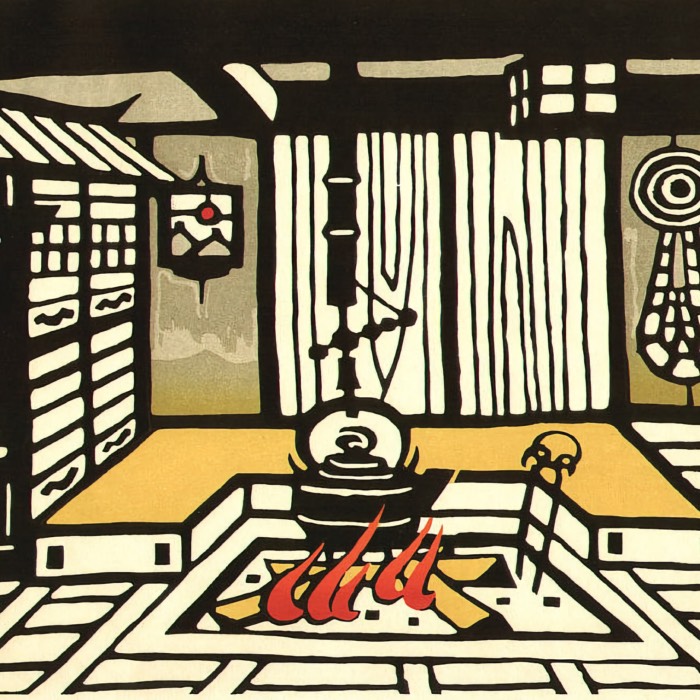
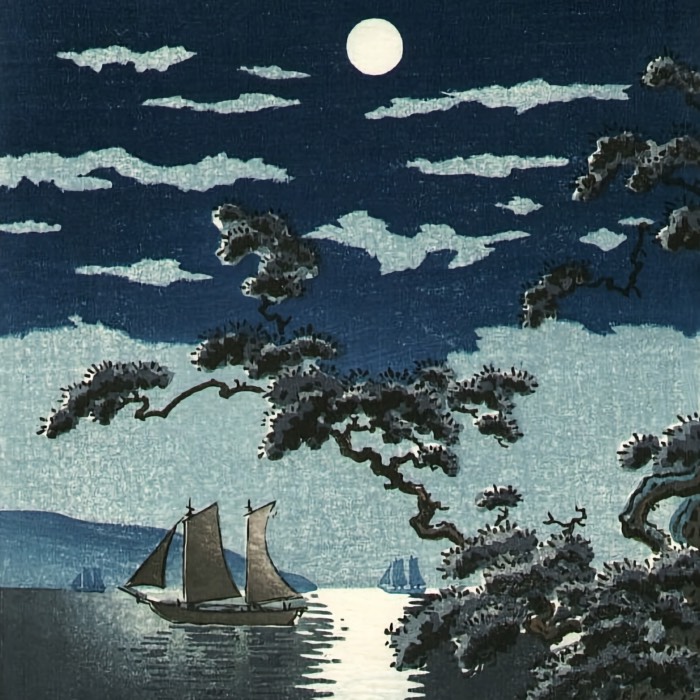
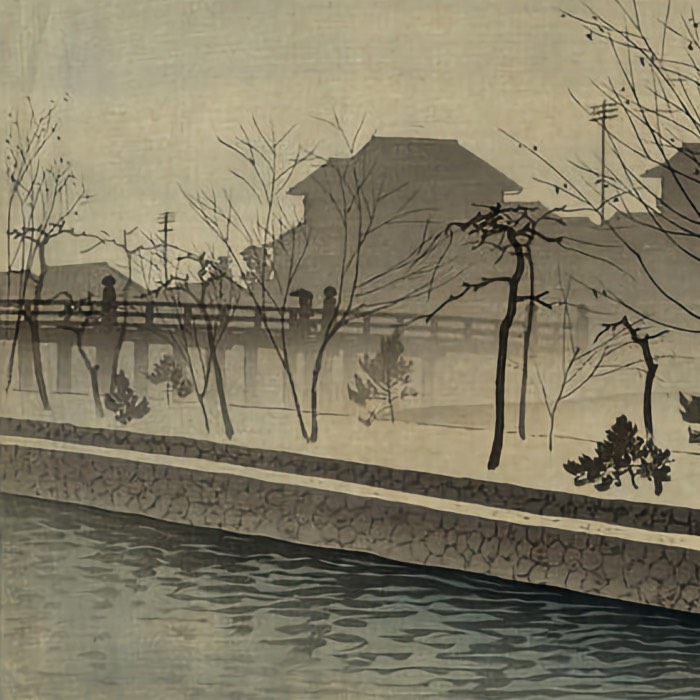
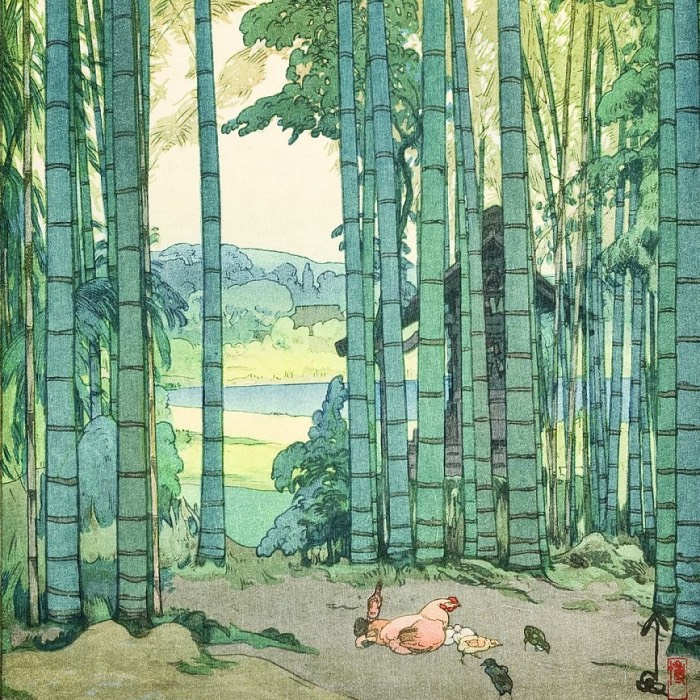
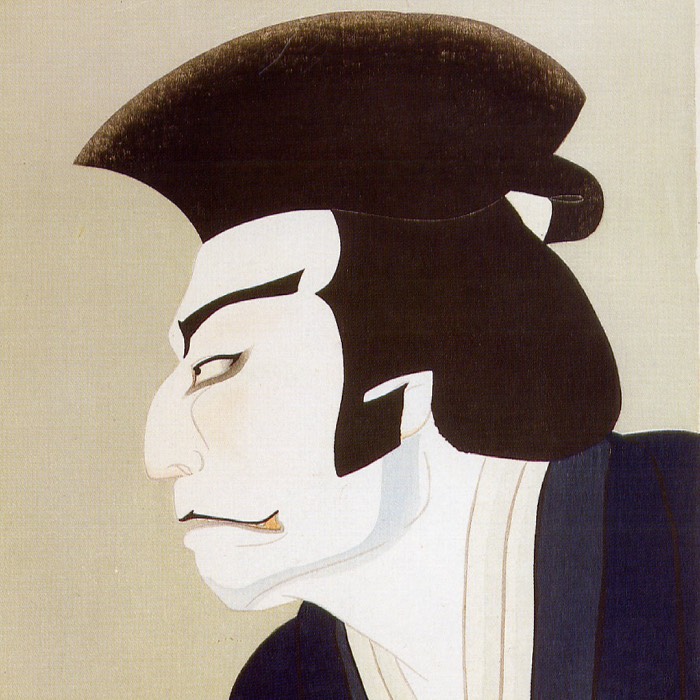
comments